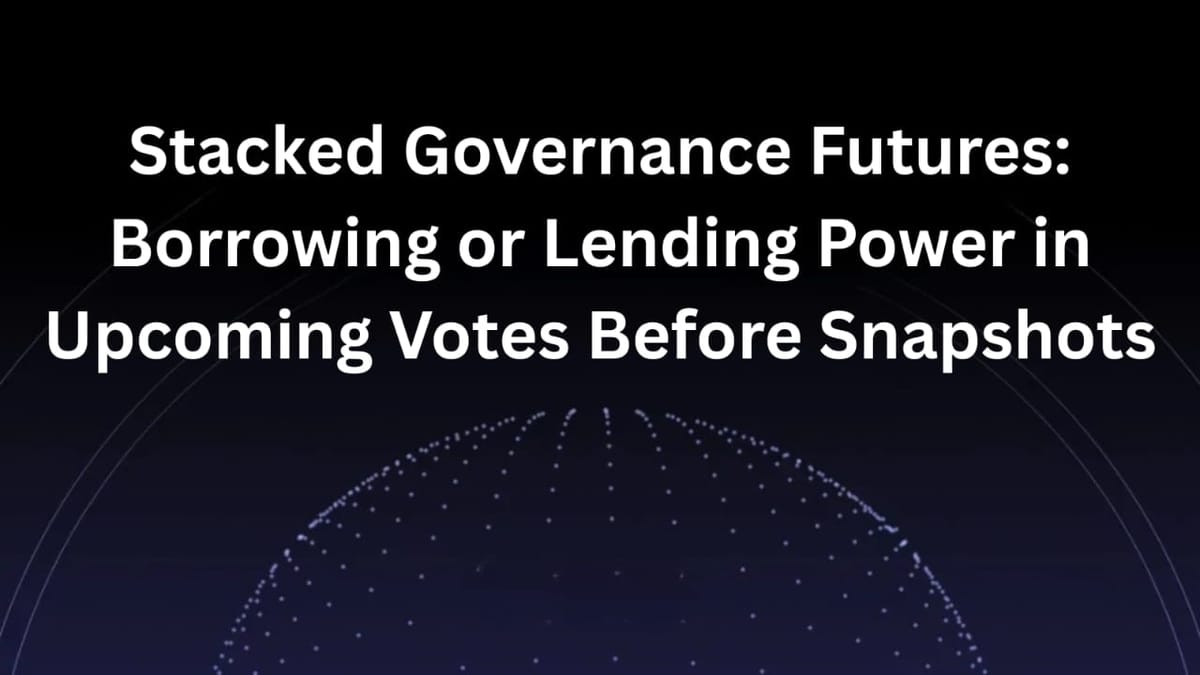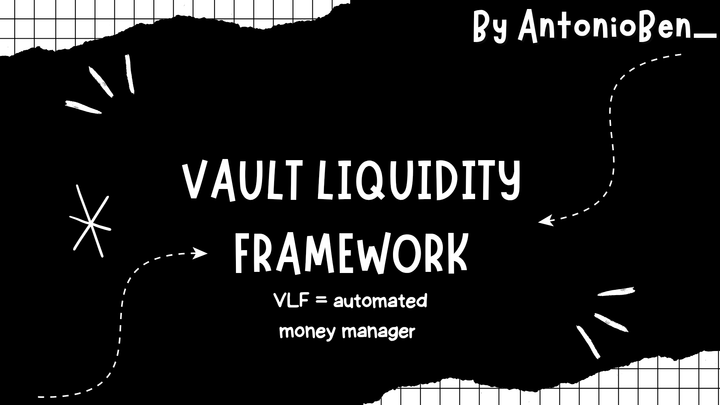Staked Governance Futures: Borrowing or Lending Power in Upcoming Votes Before Snapshots

Introduction
In the rapidly evolving landscape of decentralized finance (DeFi), governance has emerged as a critical component that shapes the future of protocols and platforms. Governance tokens empower holders to participate in decision-making processes, influencing everything from protocol upgrades to treasury management. However, the traditional governance model often faces challenges, including low voter turnout and the concentration of power among a small number of token holders. To address these issues, the concept of Staked Governance Futures (SGF) has emerged, allowing users to borrow or lend governance power in anticipation of upcoming votes. This article explores the mechanics of SGF, its implications for DeFi governance, and the potential benefits and challenges associated with this innovative approach.
1. Understanding Governance in DeFi
1.1 The Role of Governance Tokens
Governance tokens are digital assets that grant holders the right to participate in the governance of a decentralized protocol. These tokens typically allow users to vote on proposals, suggest changes, and influence the direction of the project. Some key features of governance tokens include:
- Voting Rights: Token holders can vote on proposals, with the weight of their vote often proportional to the number of tokens they hold.
- Proposal Submission: Many governance models allow token holders to submit proposals for changes or improvements to the protocol.
- Incentives for Participation: Some protocols offer rewards for active participation in governance, encouraging users to engage in the decision-making process.
1.1 Challenges in Traditional Governance Models
Despite the advantages of governance tokens, traditional governance models face several challenges:
- Low Voter Turnout: Many governance proposals receive minimal participation, leading to decisions being made by a small subset of token holders. This can result in a lack of representation and accountability.
- Concentration of Power: A small number of large token holders can dominate governance decisions, undermining the decentralized ethos of the protocol.
- Short-Term Focus: Token holders may prioritize short-term gains over long-term sustainability, leading to decisions that are not in the best interest of the protocol.
- Snapshot Timing: The timing of governance snapshots can create challenges, as token holders may not hold their tokens at the time of the vote, leading to discrepancies in voting power.
2. Introducing Staked Governance Futures (SGF)
2.1 What are Staked Governance Futures?
Staked Governance Futures (SGF) represent a speculative market on governance power itself. This innovative concept allows users to lend their governance power to others in anticipation of upcoming votes, effectively creating a market for governance influence. SGF enables token holders to borrow or lend their voting power before snapshots are taken, allowing for greater flexibility and participation in governance.
2.2 Key Features of SGF
- Lending Governance Power: Token holders can lend their governance power to others, allowing borrowers to participate in upcoming votes without needing to hold the tokens themselves.
- Borrowing Governance Power: Users can borrow governance power to influence decisions, even if they do not own the underlying tokens. This can be particularly useful for users who want to participate in governance but lack the necessary tokens.
- Speculative Market: SGF creates a speculative market for governance power, allowing users to trade and speculate on the outcomes of governance votes.
- Dynamic Participation: SGF enables more dynamic participation in governance, as users can adjust their voting power based on their interests and the proposals being considered.
3. How Staked Governance Futures Work
3.1 The Mechanics of SGF
- Lending Process: Token holders can deposit their governance tokens into an SGF platform, where they can lend their voting power to others. The platform may require users to stake their tokens for a specified period, ensuring that the tokens are locked during the lending process.
- Borrowing Process: Users seeking to borrow governance power can request a loan from the SGF platform. The platform will assess the borrower's creditworthiness, which may be based on their past voting behavior, reputation, and collateral.
- Voting Power Allocation: Once the lending and borrowing processes are complete, the SGF platform allocates voting power to borrowers based on the terms of the loan. Borrowers can then participate in governance votes as if they were the original token holders.
- Snapshot Timing: The SGF platform takes snapshots of governance power at predetermined intervals, capturing the voting power of both lenders and borrowers. This ensures that the voting power is accurately reflected during governance votes.
- Repayment and Rewards: After the governance vote concludes, borrowers must repay the borrowed governance power, along with any associated fees. Lenders may receive rewards for their participation, incentivizing them to lend their governance power.
3.1.1 Example Scenario
To illustrate how SGF works, consider the following example:
- Alice holds 1,000 governance tokens and wants to lend her voting power for an upcoming proposal vote. She deposits her tokens into the SGF platform and specifies the terms of the loan.
- Bob, who does not own governance tokens but wants to influence the vote, applies to borrow 500 governance tokens from the SGF platform. The platform assesses Bob's creditworthiness and approves the loan.
- The SGF platform allocates 500 voting power to Bob, allowing him to participate in the governance vote. Alice retains the remaining 500 voting power.
- After the vote concludes, Bob repays the borrowed governance power, along with a small fee. Alice receives a reward for lending her voting power.
4. Benefits of Staked Governance Futures
1. Increased Participation in Governance
SGF has the potential to significantly increase participation in governance by allowing users to borrow governance power. This can lead to more diverse perspectives and a broader range of opinions being considered in decision-making processes.
2. Enhanced Representation
By enabling users to lend their governance power, SGF can help mitigate the concentration of power among a small number of token holders. This can lead to more equitable representation and a more democratic governance process.
3. Speculative Opportunities
SGF creates a speculative market for governance power, allowing users to trade and speculate on the outcomes of governance votes. This can lead to increased engagement and interest in governance, as users seek to capitalize on potential outcomes.
4. Flexibility and Adaptability
SGF allows users to adjust their voting power based on their interests and the proposals being considered. This flexibility can lead to more informed decision-making and a more responsive governance process.
5. Challenges and Considerations
1. Regulatory Concerns
As SGF introduces a speculative market for governance power, it may raise regulatory concerns. Regulators may scrutinize the lending and borrowing of governance power, particularly if it is perceived as a form of financial speculation.
2. Risk of Manipulation
The ability to borrow governance power may lead to potential manipulation of governance votes. Users could coordinate to borrow power and influence outcomes in ways that may not align with the best interests of the protocol.
3. Complexity of Implementation
Implementing SGF requires sophisticated smart contracts and governance mechanisms. Ensuring the security and reliability of these systems will be crucial to prevent exploits and maintain user trust.
4. Market Volatility
The speculative nature of SGF may lead to increased volatility in governance power. Users may experience fluctuations in their voting power based on market dynamics, which could impact decision-making processes.
6. Real-World Applications of Staked Governance Futures
6.1 Case Study: A DeFi Protocol
To illustrate the potential of SGF, consider a hypothetical DeFi protocol that implements Staked Governance Futures. The protocol allows users to lend and borrow governance power for upcoming votes on protocol upgrades and changes.
- Increased Voter Turnout: The protocol experiences a significant increase in voter turnout for governance proposals, as users who previously lacked governance tokens can now participate.
- Diverse Perspectives: The inclusion of a broader range of voices leads to more informed decision-making, resulting in proposals that better reflect the interests of the community.
- Market Dynamics: The SGF platform creates a vibrant market for governance power, with users speculating on the outcomes of votes and adjusting their positions accordingly.
6.2 Potential for Cross-Protocol Governance
SGF could also facilitate cross-protocol governance, allowing users to lend and borrow governance power across different DeFi platforms. This could lead to collaborative decision-making and shared governance across ecosystems, fostering greater interoperability in the DeFi space.
7. The Future of Staked Governance Futures
Trends to Watch
- Increased Adoption: As DeFi protocols continue to evolve, the adoption of SGF may become more widespread, leading to new governance models and practices.
- Integration with Layer 2 Solutions: The rise of Layer 2 solutions may enhance the scalability and efficiency of SGF platforms, enabling faster and cheaper transactions.
- Enhanced Security Measures: As SGF gains traction, developers will likely focus on implementing robust security measures to protect against potential exploits and manipulation.
- Regulatory Developments: The regulatory landscape for DeFi is rapidly evolving, and SGF may attract scrutiny from regulators. Protocols will need to navigate these challenges while fostering innovation.
- Community-Driven Governance: The success of SGF will depend on community engagement and participation. Protocols that prioritize transparency and inclusivity in governance will likely thrive.
Conclusion
Staked Governance Futures represent a transformative approach to governance in decentralized finance, allowing users to borrow or lend governance power in anticipation of upcoming votes. By creating a speculative market for governance influence, SGF has the potential to increase participation, enhance representation, and foster more informed decision-making processes. However, challenges such as regulatory concerns, risk of manipulation, and implementation complexity must be addressed to ensure the success of this innovative governance model. As the DeFi landscape continues to evolve, SGF may play a pivotal role in shaping the future of decentralized governance.



Comments ()